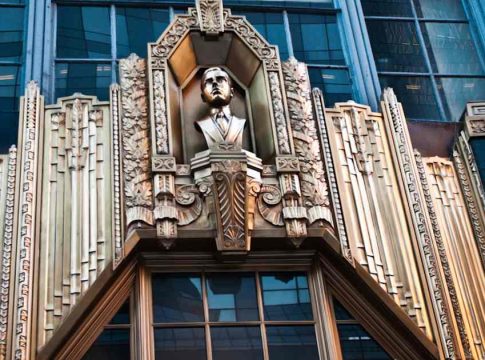The Brill Building: A Musical Melting Pot of Sounds and Stars
If you’re jamming to the classics of the 1960s, you might not realize that some of the catchiest tunes were born in a building on Broadway. Welcome to the Brill Building, where musical alchemy turned diverse influences into chart-topping hits. Despite its mostly white songwriting crew, this epicenter of creativity pulled heavily from Black musicians, blending genres like blues and boogie woogie into pop magic.
The Dynamic Duo: Stoller and Leiber
At the forefront of this musical revolution were Mike Stoller and Jerry Leiber, whose partnership took off in the early 1950s. These two guys were like musical detectives, digging deep into the gritty world of rhythm and blues to craft songs for legends like Amos Milburn and Big Mama Thornton. Their work laid the groundwork for a rare moment in music history—“a golden moment,” as NYU professor Jason King aptly puts it—where Black and white audiences collided in rhythmic harmony.
The Brill Building didn’t just churn out top-tier hits; it was a progressive oasis. Women songwriters like Carole King, Ellie Greenwich, and Cynthia Weil found their voice here, helping to redefine the industry. Author Ken Emerson captures this ethos beautifully in his book, Always Magic in the Air, noting how the Brill catalog blended Black, white, and Latino sounds well before “multiculturalism” was even a concept.
The Cozy Creativity Hub
Imagine cramped rooms vibrating with creativity. That’s what the Brill Building was like—tiny spaces where songwriters could huddle around a piano, scribbling lyrics down on sheets of paper. Carole King, who deserves a standing ovation for her contributions, reminiscences about the tight quarters where legends were born, like her huge hit “(You Make Me Feel Like) A Natural Woman” for Aretha Franklin. Talk about a classic!
Even future stars like Neil Diamond got their start here, cranking out hits like “I’m a Believer” for the Monkees before soaring into solo fame with anthems like “Sweet Caroline.”
The Fade Out
But as the ‘60s wore on, the fun fair at the Brill began to dwindle. Enter: The British Invasion led by the Beatles and singer-songwriters like Bob Dylan. With an emphasis on authentic self-expression, the music scene started to drift away from the polished pop produced in the Brill cubicles.
Adding to the shake-up was the rise of singer-songwriters who could craft their material—why share royalties when you can keep all the cash? As if that weren’t enough, the music industry’s compass swung westward to Los Angeles, leaving the Brill Building in its rearview mirror.
Meanwhile, Black artists began establishing their own creative empires, like Motown Records, freeing them from the dominant narrative penned by white composers at 1619 Broadway.
A Legacy of Collaboration
Yet, even as the Brill Building’s reign came to an end, its legacy resonates. It was a place where music transcended race—an early experiment in collaboration that fueled the flames of a burgeoning civil rights movement.
So, the next time you sing along to a classic hit, remember the diverse tapestry woven within those walls. The Brill Building wasn’t just a hub for catchy melodies; it was the heartbeat of an era, where boundaries blurred, and everyone—regardless of color—joined in the musical celebration.

Covers viral stories, pop culture, and breaking celebrity news.
Bio: Jamie has a sharp eye for what’s buzzing online, tracking social media trends and entertainment headlines around the clock.

